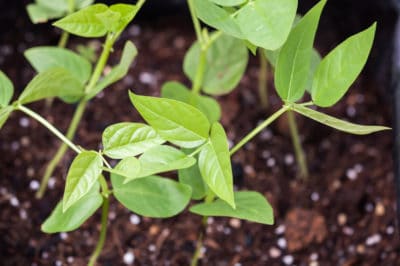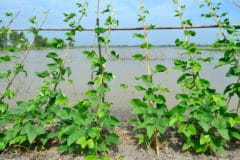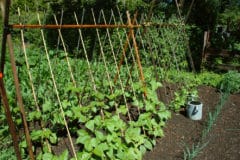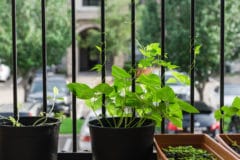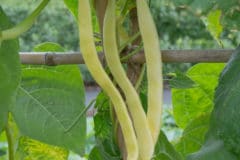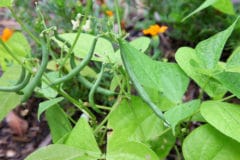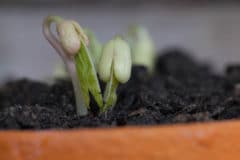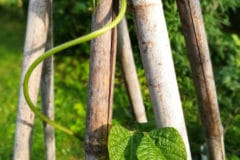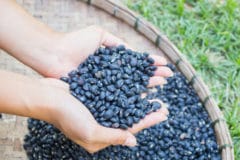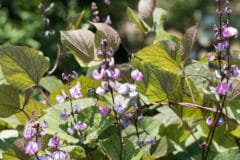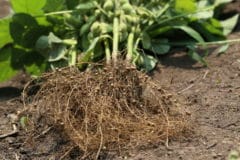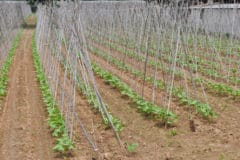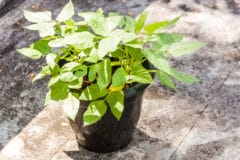Bean Growth Habits
Beans come in three different plant types. Bush beans are erect plants that grow about two feet tall. They don’t require staking, even though they may sprawl a bit. Half runner beans can grow three to four feet. They are better staked, as otherwise they tangle and beans may lie on the ground. Pole beans can grow 10 feet or more and must have supports.
Basic Requirements for Beans
In order to grow properly, beans must have the following:
- Full sunlight; at minimum, six hours of sun a day.
- Nutrient-rich, friable soil that is not too high in nitrogen, which promotes leaf rather than flower and pod growth.
- At least one inch of water per week, with more in hot, dry conditions.
- Supports like poles or a trellis for half runner and pole beans.
Bean Seed Germination
A bean seed is composed of two halves called cotyledons. As the seed takes up water, the hard shell splits and the cotyledons separate. At the same time, the seed sends a root into the soil and two rounded first leaves develop, followed by true leaves. Beans germinate best at 70°F (21°C) to 80°F (27°C) and take about eight to 10 days to emerge fully. Cooler temperatures may delay germination.
Growth Rates of Beans
The speed at which bean plants grow is genetically determined by the variety. Pole beans are particularly dramatic as far as growth is concerned. A 10-foot bean vine can reach that height within 60 days – a growth rate of approximately one foot every 12 days. The typical pattern is several weeks of root development with little top growth and then an astonishing spurt of top growth.
Flower Development
Although the exact time varies with variety, most beans begin to set flowers about six to eight weeks after planting. Pole beans tend to produce flowers from the upper middle to the top of the plant, with few on the bottom half. Too much water, inadequate sunlight and excessively hot temperatures can decrease flower development.
Setting Pods
Most beans are self pollinating, although bean plants may also benefit from the activities of pollinator insects. The bean pods will begin as tiny beans that develop in both height and diameter over the course of a few days. It’s important to check and pick beans as soon as they’re ready or the plant may stop flowering and setting new pods.
